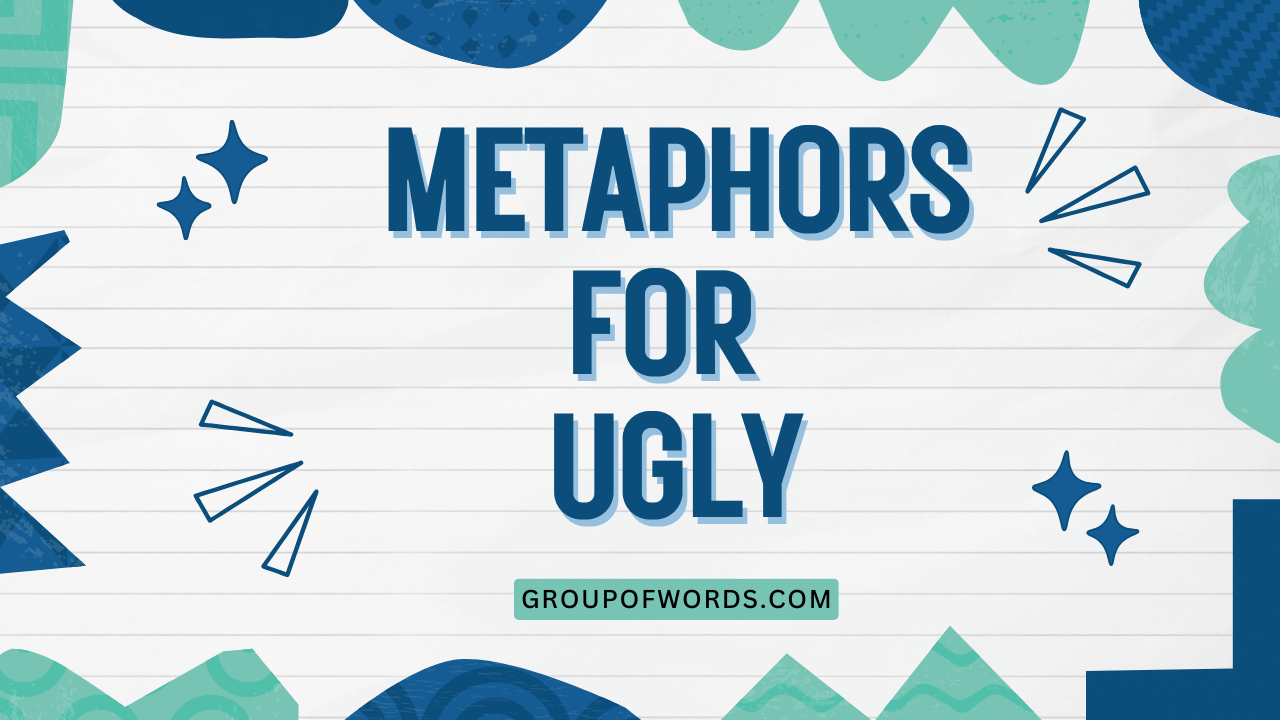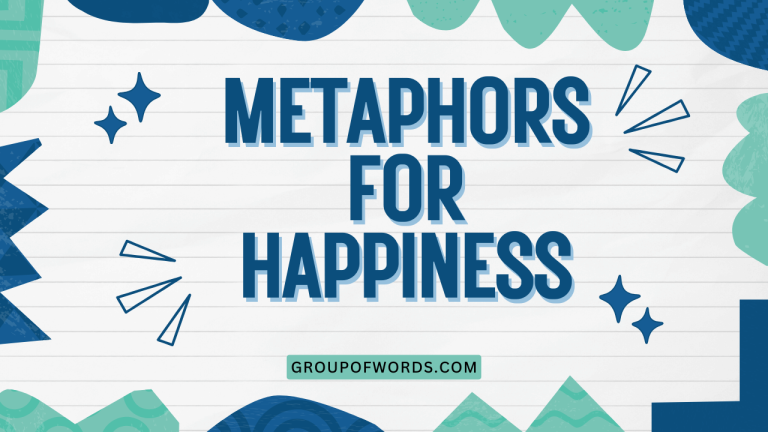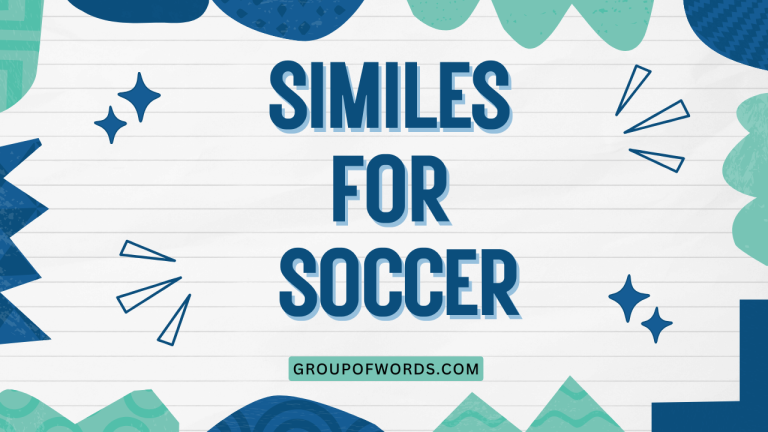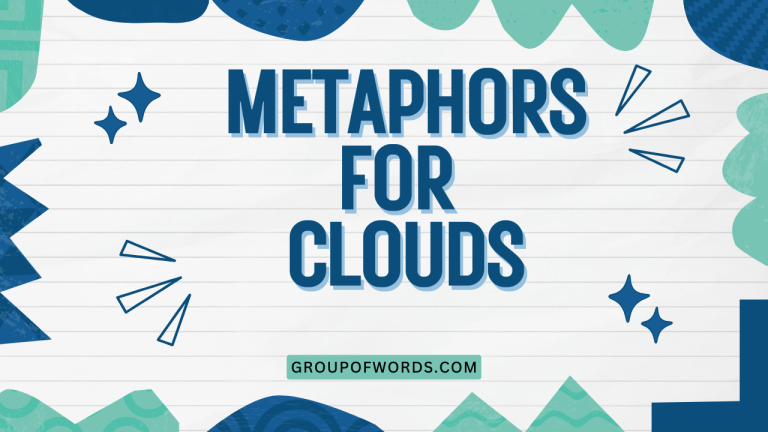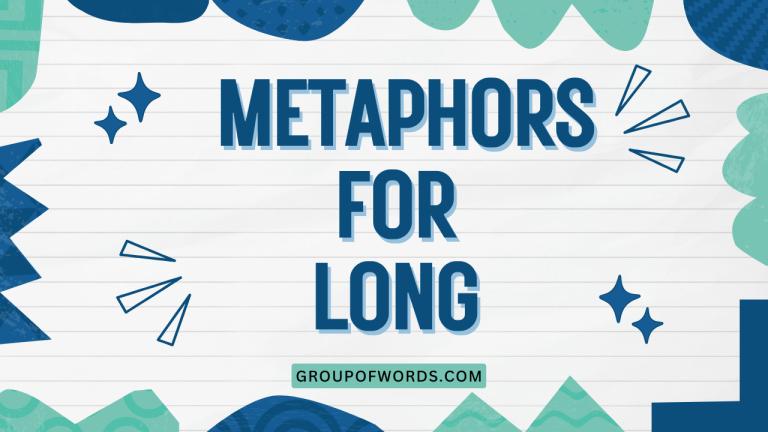Metaphors for Ugly: Describing Unattractiveness in English
Describing something as “ugly” can sometimes feel too direct or lack nuance. Metaphors offer a more colorful and creative way to express unattractiveness, adding depth and imagery to your language.
Understanding these metaphors not only expands your vocabulary but also enhances your ability to appreciate and interpret figurative language in literature, conversations, and everyday communication. This article explores a wide range of metaphors for “ugly,” providing definitions, examples, usage rules, and practice exercises to help you master this expressive aspect of English.
Whether you’re an English language learner or a native speaker, this guide will equip you with the tools to describe unattractiveness with flair and precision.
Table of Contents
- Introduction
- Definition of Metaphor and “Ugly”
- Structural Breakdown of Metaphors for Ugly
- Types and Categories of Metaphors for Ugly
- Examples of Metaphors for Ugly
- Usage Rules for Metaphors for Ugly
- Common Mistakes with Metaphors for Ugly
- Practice Exercises
- Advanced Topics: Subtlety and Context
- Frequently Asked Questions
- Conclusion
Definition of Metaphor and “Ugly”
A metaphor is a figure of speech in which a word or phrase is applied to an object or action to which it is not literally applicable. It’s a comparison between two unlike things that share some characteristics. Metaphors are used to make descriptions more vivid, imaginative, and relatable. They enrich language by creating connections and associations that go beyond literal meanings.
The word “ugly”, in its most basic sense, refers to something that is unpleasant or unattractive to look at. However, “ugly” can also describe something morally reprehensible or unpleasant in a more abstract sense. In this article, we focus primarily on metaphors that describe physical unattractiveness, but we will also touch upon metaphors that extend to emotional or moral ugliness.
Structural Breakdown of Metaphors for Ugly
Metaphors for “ugly” typically follow a basic structure: [Subject] is [Metaphorical Descriptor]. The subject is the thing being described as ugly, and the metaphorical descriptor is the word or phrase that creates the comparison. The effectiveness of the metaphor depends on the strength and relevance of the comparison.
For example, in the metaphor “His face was a roadmap of wrinkles,” the subject is “His face,” and the metaphorical descriptor is “a roadmap of wrinkles.” The comparison highlights the many lines and imperfections on the face, suggesting age and perhaps a hard life, thereby implying ugliness in a descriptive and evocative way.
The structural elements often involve sensory details (sight, smell, touch) and emotional associations. A strong metaphor will evoke a visceral reaction in the reader or listener, making the description more impactful.
The choice of words, their connotations, and the overall context play crucial roles in shaping the meaning and effect of the metaphor.
Types and Categories of Metaphors for Ugly
Metaphors for “ugly” can be categorized based on the source of comparison. Here are several common categories:
Animalistic Metaphors
Animalistic metaphors compare the subject to an animal known for its perceived ugliness or unpleasant characteristics. These metaphors often rely on stereotypes and cultural associations with certain animals.
Object-Based Metaphors
Object-based metaphors compare the subject to inanimate objects that are considered ugly, broken, or undesirable. These metaphors often highlight flaws, imperfections, or a lack of aesthetic appeal.
Nature-Related Metaphors
Nature-related metaphors draw comparisons to elements of nature that are considered unpleasant or decaying, such as withered plants, thorny bushes, or barren landscapes. These metaphors often evoke a sense of decay or neglect.
Abstract Metaphors
Abstract metaphors use intangible concepts or emotions to describe ugliness. These metaphors often focus on the internal or moral qualities that contribute to a sense of unattractiveness.
Food-Related Metaphors
Food-related metaphors compare the subject to food items that are spoiled, rotten, or otherwise unappetizing. These metaphors often evoke a sense of disgust or revulsion.
Examples of Metaphors for Ugly
Here are some specific examples of metaphors for “ugly,” organized by category:
Animalistic Metaphor Examples
These metaphors often use animals that are traditionally considered unattractive to describe a person’s appearance. The following table presents a variety of examples, showcasing the range of animalistic comparisons that can be used.
| Metaphor | Explanation |
|---|---|
| His face was a bulldog chewing a wasp. | Suggests a wrinkled, angry, and generally unpleasant face. |
| She looked like a drowned rat. | Implies a disheveled, unattractive, and pitiful appearance. |
| His smile was a viper’s grin. | Conveys a sense of malice and repulsiveness. |
| Her skin was like a toad’s back. | Suggests a bumpy, rough, and unattractive texture. |
| He moved with the grace of a walrus. | Implies clumsiness and awkwardness, contributing to an overall unattractive image. |
| Her voice sounded like a crow’s caw. | Describes a harsh, unpleasant, and grating sound. |
| His eyes were like a snake’s, cold and unblinking. | Suggests a lack of emotion and a chilling presence. |
| She had the complexion of a plucked chicken. | Implies a pale, uneven, and unattractive skin tone. |
| He resembled a bloated tick. | Conveys a sense of repulsiveness and parasitic nature. |
| Her hair was like a bird’s nest, tangled and unkempt. | Suggests a messy, unattractive, and neglected appearance. |
| His laughter was a hyena’s shriek. | Describes a harsh, unpleasant, and unsettling sound. |
| She looked like something the cat dragged in. | Implies a disheveled, unattractive, and generally undesirable appearance. |
| His face was a map of wrinkles, like a tortoise’s shell. | Suggests age, roughness, and an unattractive texture. |
| Her movements were as jerky as a puppet on strings. | Implies an unnatural and unattractive way of moving. |
| He had the charm of a skunk at a garden party. | Conveys a sense of being unwelcome and unpleasant. |
| She looked like a wet hen. | Implies a pathetic, disheveled, and unattractive appearance. |
| His personality was as prickly as a porcupine. | Suggests a defensive, unpleasant, and unapproachable demeanor. |
| Her smile was as fake as a crocodile’s tears. | Conveys insincerity and a lack of genuine emotion. |
| He was as repulsive as a dung beetle. | Implies a sense of disgust and unattractiveness. |
| She had the grace of an elephant in a tutu. | Suggests clumsiness, awkwardness, and an inappropriate appearance. |
| His voice was like a frog’s croak, grating and unpleasant. | Describes a harsh, unpleasant, and irritating sound. |
| She looked like a scarecrow in the wind, disheveled and forlorn. | Implies a neglected, unattractive, and pitiful appearance. |
| His eyes were beady, like a rat’s. | Suggests a cunning, untrustworthy, and unattractive gaze. |
Object-Based Metaphor Examples
These metaphors compare a person’s appearance to inanimate objects that are considered ugly, broken, or undesirable. The following table provides examples of how object-based metaphors can be used to describe unattractiveness.
| Metaphor | Explanation |
|---|---|
| His face was a shattered mirror. | Implies a broken, fragmented, and unattractive appearance. |
| She looked like a rusty old gate. | Suggests age, neglect, and an unattractive appearance. |
| His smile was a cracked window. | Conveys a sense of imperfection and flaw. |
| Her skin was like sandpaper. | Suggests a rough, unpleasant, and unattractive texture. |
| He moved like a broken robot. | Implies stiffness, awkwardness, and a lack of grace. |
| Her voice was like nails on a chalkboard. | Describes a grating, unpleasant, and irritating sound. |
| His eyes were like chips of flint, hard and cold. | Suggests a lack of warmth and an uninviting gaze. |
| She had the complexion of a faded photograph. | Implies a dull, lifeless, and unattractive skin tone. |
| He resembled a crumpled piece of paper. | Conveys a sense of being worn, used, and unattractive. |
| Her hair was like tangled wire. | Suggests a messy, unkempt, and unattractive appearance. |
| His laughter was like a rusty hinge. | Describes a creaky, unpleasant, and irritating sound. |
| She looked like a discarded doll. | Implies neglect, unattractiveness, and a loss of value. |
| His face was a roadmap of wrinkles. | Suggests age, experience, and a weathered appearance. |
| Her movements were as stiff as a mannequin’s. | Implies an unnatural and unattractive way of moving. |
| He had the charm of a broken record. | Conveys a sense of repetition and annoyance. |
| She looked like a deflated balloon. | Implies a loss of energy, vitality, and attractiveness. |
| His personality was as abrasive as steel wool. | Suggests an unpleasant, irritating, and off-putting demeanor. |
| Her smile was as fake as a plastic flower. | Conveys insincerity and a lack of genuine emotion. |
| He was as appealing as a burnt-out lightbulb. | Implies a lack of energy, brightness, and attractiveness. |
| She had the grace of a wobbly table. | Suggests clumsiness, instability, and an unattractive presence. |
| His voice was like a creaking door, grating and unpleasant. | Describes a harsh, unpleasant, and irritating sound. |
| She looked like a shattered vase, broken and irreparable. | Implies damage, fragility, and a loss of beauty. |
| His eyes were dull, like tarnished coins. | Suggests a lack of sparkle, vitality, and attractiveness. |
Nature-Related Metaphor Examples
These metaphors compare a person’s appearance to elements of nature that are considered unpleasant or decaying. The following table provides examples of how nature-related metaphors can be used to describe unattractiveness.
| Metaphor | Explanation |
|---|---|
| His face was a barren landscape. | Implies a lack of life, warmth, and attractiveness. |
| She looked like a withered flower. | Suggests age, decay, and a loss of beauty. |
| His smile was a thorny branch. | Conveys a sense of pain, discomfort, and repulsiveness. |
| Her skin was like rough bark. | Suggests a coarse, uneven, and unattractive texture. |
| He moved with the grace of a fallen tree. | Implies clumsiness, heaviness, and a lack of agility. |
| Her voice was like rustling leaves in a graveyard. | Describes a whispery, unsettling, and unpleasant sound. |
| His eyes were like muddy pools, murky and unclear. | Suggests a lack of clarity, depth, and attractiveness. |
| She had the complexion of a grey sky before a storm. | Implies a dull, lifeless, and unattractive skin tone. |
| He resembled a gnarled old tree root. | Conveys a sense of age, roughness, and unattractiveness. |
| Her hair was like dry straw. | Suggests a brittle, lifeless, and unattractive appearance. |
| His laughter was like the wind howling through a broken window. | Describes a harsh, unpleasant, and unsettling sound. |
| She looked like a weed in a garden. | Implies unwantedness, neglect, and unattractiveness. |
| His face was a craggy cliff face. | Suggests age, roughness, and a weathered appearance. |
| Her movements were as awkward as a newborn foal. | Implies clumsiness, instability, and an unattractive way of moving. |
| He had the charm of a patch of poison ivy. | Conveys a sense of irritation, discomfort, and avoidance. |
| She looked like a wilted lettuce leaf. | Implies a loss of freshness, vitality, and attractiveness. |
| His personality was as sharp as a thistle. | Suggests a prickly, defensive, and unpleasant demeanor. |
| Her smile was as welcoming as a swamp. | Conveys a sense of unpleasantness, repulsiveness, and avoidance. |
| He was as appealing as a rotting log. | Implies decay, unpleasantness, and a lack of attraction. |
| She had the grace of a tumbleweed in a hurricane. | Suggests a lack of control, direction, and attractiveness. |
| His voice was like gravel grinding underfoot, harsh and unpleasant. | Describes a harsh, unpleasant, and irritating sound. |
| She looked like a storm cloud ready to burst. | Implies a dark, brooding, and unattractive presence. |
| His eyes were like pebbles on a beach, hard and indifferent. | Suggests a lack of warmth, emotion, and attractiveness. |
Abstract Metaphor Examples
These metaphors use intangible concepts or emotions to describe ugliness. They often focus on internal or moral qualities that contribute to a sense of unattractiveness.
The following table illustrates how abstract metaphors can be used to convey a sense of ugliness.
| Metaphor | Explanation |
|---|---|
| His soul was a black hole. | Implies a lack of goodness, empathy, and attractiveness. |
| She radiated negativity like a toxic cloud. | Suggests an unpleasant, harmful, and unattractive aura. |
| His smile was a mask of deceit. | Conveys insincerity, untrustworthiness, and repulsiveness. |
| Her personality was a minefield of insecurities. | Suggests a volatile, unpredictable, and unattractive demeanor. |
| He moved with the grace of a guilty conscience. | Implies unease, discomfort, and a lack of confidence. |
| Her voice was a constant drone of complaint. | Describes a monotonous, irritating, and unpleasant sound. |
| His eyes were vacant windows to an empty soul. | Suggests a lack of depth, emotion, and attractiveness. |
| She had the charm of a tax audit. | Implies unpleasantness, stress, and avoidance. |
| He resembled a walking contradiction. | Conveys a sense of confusion, inconsistency, and unattractiveness. |
| Her laughter was a hollow echo of joy. | Suggests a lack of genuine happiness and a superficial nature. |
| His presence was a heavy weight in the room. | Describes an oppressive, uncomfortable, and unpleasant atmosphere. |
| She looked like a walking regret. | Implies sadness, remorse, and an unattractive aura. |
| His face was a canvas of bitterness. | Suggests resentment, anger, and an unpleasant disposition. |
| Her movements were as predictable as a broken record. | Implies boredom, monotony, and a lack of excitement. |
| He had the charm of a root canal. | Conveys a sense of pain, discomfort, and avoidance. |
| She looked like a walking question mark. | Implies confusion, uncertainty, and a lack of confidence. |
| His personality was as appealing as a Monday morning. | Suggests unpleasantness, drudgery, and a lack of enthusiasm. |
| Her smile was as genuine as a politician’s promise. | Conveys insincerity, untrustworthiness, and manipulation. |
| He was as welcome as a power outage during a heatwave. | Implies inconvenience, discomfort, and unwantedness. |
| She had the grace of a social faux pas. | Suggests awkwardness, embarrassment, and unattractiveness. |
| His voice was like a constant hum of anxiety. | Describes a nervous, unsettling, and unpleasant sound. |
| She looked like a walking apology. | Implies guilt, shame, and a lack of self-confidence. |
| His eyes were like pools of despair, deep and endless. | Suggests sadness, hopelessness, and an unattractive gaze. |
Food-Related Metaphor Examples
These metaphors compare the subject to food items that are spoiled, rotten, or otherwise unappetizing. The following table provides examples of how food-related metaphors can be used to describe unattractiveness.
| Metaphor | Explanation |
|---|---|
| His face was a plate of spoiled leftovers. | Implies decay, unpleasantness, and unattractiveness. |
| She looked like a rotten apple. | Suggests decay, imperfection, and a loss of beauty. |
| His smile was a stale cracker. | Conveys a sense of dryness, lack of warmth, and repulsiveness. |
| Her skin was like curdled milk. | Suggests a sour, unpleasant, and unattractive texture. |
| He moved with the grace of a bowl of jelly. | Implies clumsiness, instability, and a lack of elegance. |
| Her voice was like chewing on tin foil. | Describes a grating, unpleasant, and irritating sound. |
| His eyes were like olives swimming in oil, slick and unsettling. | Suggests an unnatural, unpleasant, and unattractive gaze. |
| She had the complexion of a moldy peach. | Implies a decayed, unattractive, and unhealthy skin tone. |
| He resembled a discarded banana peel. | Conveys a sense of being worthless, unwanted, and unattractive. |
| Her hair was like burnt spaghetti. | Suggests a dry, brittle, and unattractive appearance. |
| His laughter was like the sound of someone scraping a fork on a plate. | Describes a grating, unpleasant, and irritating sound. |
| She looked like a bowl of day-old oatmeal. | Implies dullness, unattractiveness, and a lack of appeal. |
| His face was a roadmap of grease stains. | Suggests uncleanliness, unpleasantness, and unattractiveness. |
| Her movements were as smooth as lumpy gravy. | Implies awkwardness, unevenness, and a lack of grace. |
| He had the charm of a week-old fish. | Conveys a sense of unpleasantness, repulsiveness, and avoidance. |
| She looked like a half-eaten sandwich left in the sun. | Implies decay, neglect, and a loss of appeal. |
| His personality was as appealing as a mouthful of sand. | Suggests unpleasantness, irritation, and a lack of enjoyment. |
| Her smile was as sweet as saccharine. | Conveys artificiality, insincerity, and a lack of genuine warmth. |
| He was as appetizing as a plate of cold, congealed fat. | Implies disgust, repulsiveness, and a lack of attraction. |
| She had the grace of a dropped ice cream cone. | Suggests clumsiness, messiness, and an unattractive presence. |
| His voice was like chewing gravel, harsh and unpleasant. | Describes a grating, unpleasant, and irritating sound. |
| She looked like a forgotten cake in a dusty bakery window. | Implies neglect, staleness, and a loss of appeal. |
| His eyes were like raisins in a bowl of oatmeal, small and insignificant. | Suggests a lack of sparkle, vitality, and attractiveness. |
Usage Rules for Metaphors for Ugly
When using metaphors for “ugly,” consider the following rules:
- Context is key: The appropriateness of a metaphor depends heavily on the context. A metaphor that is effective in one situation may be offensive or inappropriate in another.
- Clarity is important: The metaphor should be understandable to your audience. Avoid obscure or overly complex comparisons that may confuse the reader or listener.
- Avoid clichés: Overused metaphors can lose their impact. Strive for originality and creativity in your comparisons.
- Consider connotations: Pay attention to the connotations of the words you use in your metaphor. Ensure that the associations align with the message you want to convey.
- Be sensitive: Be mindful of the potential for offense, especially when describing physical appearance. Avoid metaphors that perpetuate harmful stereotypes or promote body shaming.
Common Mistakes with Metaphors for Ugly
Here are some common mistakes to avoid when using metaphors for “ugly”:
| Incorrect | Correct | Explanation |
|---|---|---|
| His face was like a beautiful flower. | His face was like a withered flower. | The original metaphor contradicts the intended meaning of “ugly.” |
| She was as pretty as a rusty nail. | She was as unattractive as a rusty nail. | The original comparison is illogical and does not convey unattractiveness. |
| His smile was a bright sun. | His smile was a fleeting shadow. | The original metaphor suggests positivity, not ugliness. |
| Her skin was smooth like silk sandpaper. | Her skin was rough like sandpaper. | The simile contains a contradiction. |
| He ran like a graceful turtle. | He ran like a clumsy turtle. | The adjective contradicts the animal’s known characteristics. |
Practice Exercises
Test your understanding of metaphors for “ugly” with these exercises.
Exercise 1: Identify the Metaphor
Identify the metaphor in each sentence and explain what it suggests about the person’s appearance.
| Question | Answer |
|---|---|
| 1. His face was a roadmap of bad decisions. | Metaphor: “roadmap of bad decisions.” Suggests a face marked by hardship and poor choices. |
| 2. She looked like a deflated tire. | Metaphor: “deflated tire.” Suggests a loss of energy, vitality, and attractiveness. |
| 3. His smile was a rusty gate creaking open. | Metaphor: “rusty gate creaking open.” Suggests an unpleasant, forced, and unattractive smile. |
| 4. Her hair was a bird’s nest after a storm. | Metaphor: “bird’s nest after a storm.” Suggests a messy, tangled, and unattractive appearance. |
| 5. He had the charm of a wet sock. | Metaphor: “charm of a wet sock.” Suggests unpleasantness, discomfort, and a lack of appeal. |
| 6. She looked like a scarecrow in a hurricane. | Metaphor: “scarecrow in a hurricane.” Suggests a disheveled, neglected, and unattractive appearance. |
| 7. His personality was a prickly cactus. | Metaphor: “prickly cactus.” Suggests a defensive, unpleasant, and unapproachable demeanor. |
| 8. Her voice was a grating foghorn. | Metaphor: “grating foghorn.” Suggests a harsh, unpleasant, and irritating sound. |
| 9. He was as welcome as a skunk at a picnic. | Metaphor: “skunk at a picnic.” Suggests being unwelcome and unpleasant. |
| 10. She moved with the grace of a newborn giraffe. | Metaphor: “newborn giraffe.” Suggests clumsiness and awkwardness. |
Exercise 2: Complete the Metaphor
Complete the following sentences with an appropriate metaphor for “ugly.”
| Question | Answer |
|---|---|
| 1. His face was like __________. | His face was like a crumpled paper bag. |
| 2. She looked as appealing as __________. | She looked as appealing as a plate of cold porridge. |
| 3. His smile was as warm as __________. | His smile was as warm as a winter storm. |
| 4. Her skin felt like __________. | Her skin felt like rough tree bark. |
| 5. He moved with the grace of __________. | He moved with the grace of a broken washing machine. |
| 6. Her voice sounded like __________. | Her voice sounded like fingernails on a chalkboard. |
| 7. He had the charm of __________. | He had the charm of a tax audit. |
| 8. She looked like __________. | She looked like a wilted houseplant. |
| 9. His eyes were like __________. | His eyes were like murky puddles. |
| 10. The room smelled like __________. | The room smelled like old gym socks. |
Exercise 3: Create Your Own Metaphor
Write a sentence using a metaphor to describe someone or something as “ugly,” using each of the following categories:
- Animalistic
- Object-Based
- Nature-Related
- Abstract
- Food-Related
Answers: (Examples)
- Animalistic: His smile was as welcoming as a rattlesnake’s hiss.
- Object-Based: Her dress looked like a discarded rag.
- Nature-Related: The building was a barren landscape of concrete.
- Abstract: His heart was a frozen wasteland.
- Food-Related: The soup tasted like dishwater.
Advanced Topics: Subtlety and Context
Mastering metaphors involves understanding the nuances of subtlety and context. A truly effective metaphor is not only creative but also appropriate for the situation.
Consider the audience, the tone of the conversation, and the overall message you want to convey. Sometimes, a subtle metaphor can be more powerful than an overly dramatic one.
For instance, instead of saying “His face was a battlefield,” you might say “His face told a story of hard-won battles,” which is more nuanced and evocative.
Furthermore, understanding the cultural context is crucial. Some metaphors may be offensive or insensitive in certain cultures.
Be mindful of these differences and adjust your language accordingly. The goal is to communicate effectively and respectfully, using metaphors to enhance understanding rather than create barriers.
Frequently Asked Questions
- What is the difference between a metaphor and a simile?
Both metaphors and similes are figures of speech that compare two unlike things. However, a metaphor directly equates the two things, while a simile uses “like” or “as” to make the comparison. For example, “He is a lion” (metaphor) versus “He is like a lion” (simile).
- Why use metaphors instead of simply saying “ugly”?
Metaphors add depth, imagery, and emotional impact to your descriptions. They can make your language more vivid and engaging, allowing you to convey a sense of unattractiveness in a more creative and nuanced way. Simply saying “ugly” can sometimes feel too blunt or lack descriptive power.
- How can I improve my ability to create effective metaphors?
Read widely, pay attention to the metaphors used by others, and practice creating your own. Think about the qualities you want to emphasize and brainstorm different comparisons that evoke those qualities. Don’t be afraid to experiment and be creative.
- Are there any situations where it’s inappropriate to use metaphors for “ugly”?
Yes. Avoid using metaphors that are offensive, insensitive, or perpetuate harmful stereotypes. Be mindful of the context and your audience, and always prioritize respect and sensitivity.
- Can metaphors for “ugly” be used in a positive way?
While primarily used to describe unattractiveness, metaphors can sometimes be used ironically or humorously, or to highlight unconventional beauty. However, this requires careful handling and a clear understanding of the context to avoid misinterpretation.
- How do I avoid using clichés when creating metaphors?
Think outside the box and strive for originality. Instead of relying on overused comparisons, try to find fresh and unexpected connections between the subject and the metaphorical
object. The more unique and imaginative your metaphor, the more impactful it will be.
Conclusion
Metaphors for “ugly” provide a rich and varied way to express unattractiveness, adding depth, color, and emotional resonance to your language. By understanding the different types of metaphors, following usage rules, and practicing regularly, you can master this expressive tool and enhance your ability to communicate effectively and creatively.
Remember to be mindful of context, avoid clichés, and prioritize sensitivity in your descriptions. With these guidelines in mind, you can use metaphors to paint vivid pictures and convey complex emotions, enriching your writing and conversation.
